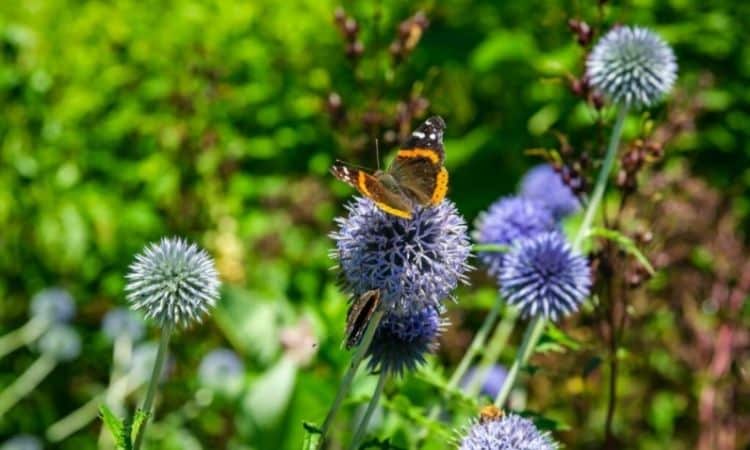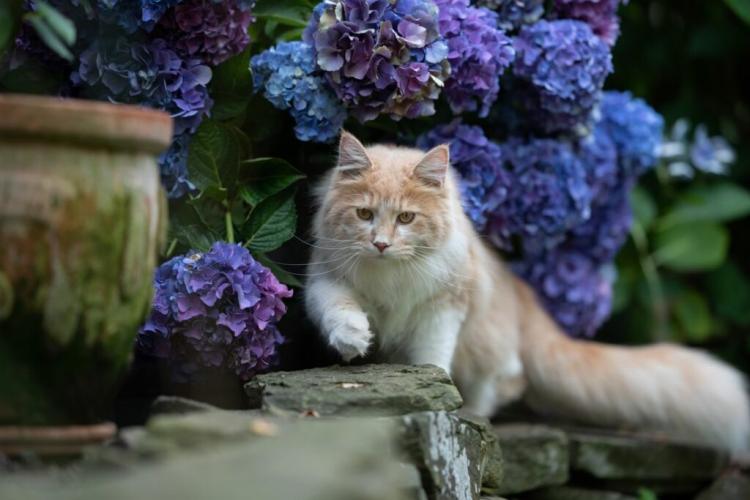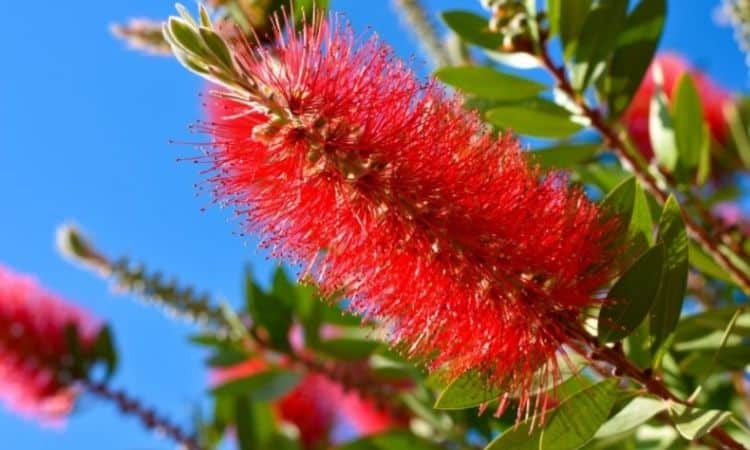Globe Thistle: Plants, Care And The Most Beautiful Varieties
Where should globe thistles be planted? What should one consider when cutting and caring for globe thistles? We give tips and introduce the best white and blue globe thistles varieties.
The eye-catching globe thistle with its white or purple to blue flower heads immediately attracts all eyes in the garden. We will introduce you to the ornamental thistle, its requirements, and the best varieties.
Spherical Thistle: Flowering Time, Origin, And Characteristics
Table of Contents
The different variants of globe thistles (Echinops sp.) all belong to the family of composite flowers (Asteraceae). They are also closely related to the other thistles, such as the medically used milk thistle (Silybum marianum) or the extremely scratchy field thistle (Cirsium arvense). In our gardens, you can usually find one of the four most common species.
The Ruthenian globe thistle (Echinops ritro) is native to Pannonian areas, also occurs wild in Austria, and is endangered there. Echinops bannaticus, the Banater globe thistle, originates from southeastern Europe. The glandular globe thistle (Echinops sphaerocephalus) is found in southern Europe, across the Caucasus to the Chinese province of Xinjiang.
In our beds, globe thistles are completely hardy and perennial. Typical for globe thistles are deeply divided and serrated, prickly, dark green leaves. In spring these initially form a leaf rosette close to the ground. In summer, long, partly woolly haired, silvery-white to reddish flower stems stretch towards the sky, covered with a few small leaves.
The many small individual flowers sit together at the tip of the flower stalk as a round head. The petals are star-shaped and white, purple, or blue colored. The flowering time of the globe thistle begins in July and lasts until August or September, depending on the variety. Bees and especially bumblebees love to visit the globe thistle and collect nectar and pollen. We have compiled further bee-friendly perennials for you in our special article.

Globe Thistle Varieties
The globe thistle is available in different species and varieties, they differ mainly in flower color and growth height.
Blue Globe Thistles
- Taplow Blue: This Banater globe thistle radiates an intense blue color and forms many flower stems. The variety grows up to 1.20 meters high and can also be propagated vegetatively.
- Blue Glow: Belongs to the species of the Banater globe thistles and reaches a height of about one meter.
- Veitchs Blue: This Ruthenian globe thistle grows to a height of about 50 to 80 centimeters and has a bright blue color with a slight violet tinge. Leaves and flower stems are silvery green-haired.
- Platinum Blue: This Ruthenian globe thistle delights us with its bright sky-blue flowers and a low growth height of 50 to 60 cm.
centimeters.
White Globe Thistles
- Arctic Glow: This glandular globe thistle forms large, white-flowered flower heads and shows a beautiful contrast with its reddish stem and silvery green leaves. It reaches a height of up to one meter.
- Star Frost: A pure white Banater globe thistle, which carries its flower heads on light green stems at a height of about 80 centimeters.

Plant Globe Thistle
Thistles are easy to care for and undemanding, making them perfect for every garden and perennial lover. You can find out here which locations this unusual thistle prefers and when it is best to plant it.
The Right Location For Globe Thistles
Globe thistles are quite drought-tolerant and tolerate the summer heat even in full sun locations. They are also not eaten by snails and grow very well upright and stable on loose, less humusy, rather dry soils. In too humid and nutrient-rich locations, the globe thistle tends to fall over. In prairie and stone beds, it forms a varied eye-catcher that can be combined well with other drought-tolerant plants such as yarrow (Achillea millefolium), gypsophila, or various grasses.
How To Plant The Globe Thistle In Tubs And Beds
Perennials are best planted in autumn so that the globe thistle can develop sufficient roots before winter and starts it’s vigorous budding only next year. Thistles in tubs should not be kept outdoors during the winter because the risk of the plant container freezing completely and destroying the roots is very high.
In the bed, however, this risk does not exist, as the entire soil never freezes through. The planting distance is about 60 to 70 centimeters; two plants should be planted per square meter. Smaller and more compact varieties such as ‘Platinum Blue’ can be planted closer together at a distance of 40 centimeters.
In the first weeks after planting, the globe thistles should be lightly watered again and again, depending on the weather.

Thistle Care: Our Tips
globe thistles are extremely easy to care for and are hardly ever attacked by pests or diseases if they are planted in the right place. Aphids can occasionally appear, but they only rarely become a plague. Root rot can occur in excessively humid locations.
Cut Globe Thistle: How To Proceed
The ball thistle is cuttable, so the scissors can be used without hesitation. It may be necessary to cut back, if the flower heads bend, for example after a thunderstorm. The flowers can also be cut and dried as decoration before opening.
Also, if you want to prevent the uncontrolled spread of the globe thistle, you have to cut off the withered inflorescences early before the seeds are on their way. Usually, however, birds eat the fat and protein-rich seeds and put on a piece of winter bacon. The flower stems are always cut out at the very bottom of the base.
Like most perennials, thistles are cut back completely close to the ground in autumn. The roots hibernate in the ground and sprout freshly the next spring.
Fertilizing Globe Thistles
globe thistles make low nutrient demands on the soil. On very poor soils or in rockeries, however, globe thistle can also suffer from nutrient deficiency, which is expressed in discoloration of the leaves and poor growth and flowering. Spring is the best time to fertilize perennials like the globe thistle.
We recommend a mainly organic slow-release fertilizer, which is worked into the soil superficially around the plants. Soil organisms release the nutrients contained in the granules slowly and gently throughout the season.

Multiply Globe Thistle
The easiest way to propagate the globe thistle is by division. In spring, simply cut off a part of the perennial with a sharp spade and bury it in another place. The plant grows particularly easily here because there is already a lot of root mass. In late winter, when the plant is still dormant, root cuttings can be cut to propagate the globe thistle. The thick roots are cut into 5 to 10 centimeter long pieces and placed in moist soil with a large amount of sand, whereby the new plant then shoots out of adventitious buds.
The extraction of seeds only makes sense with varietally pollinated flowers that could not have crossed with other, nearby globe thistles. If you want to obtain seeds from globe thistles, simply leave the inflorescences standing and watch them mature. In October the achenes, i.e. the seeds of the globe thistle, ripen and the inflorescence dries up. Now the seeds can be cut off together with their heads and dried in the house.






